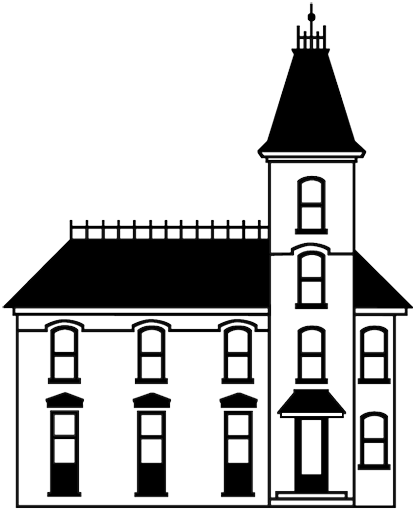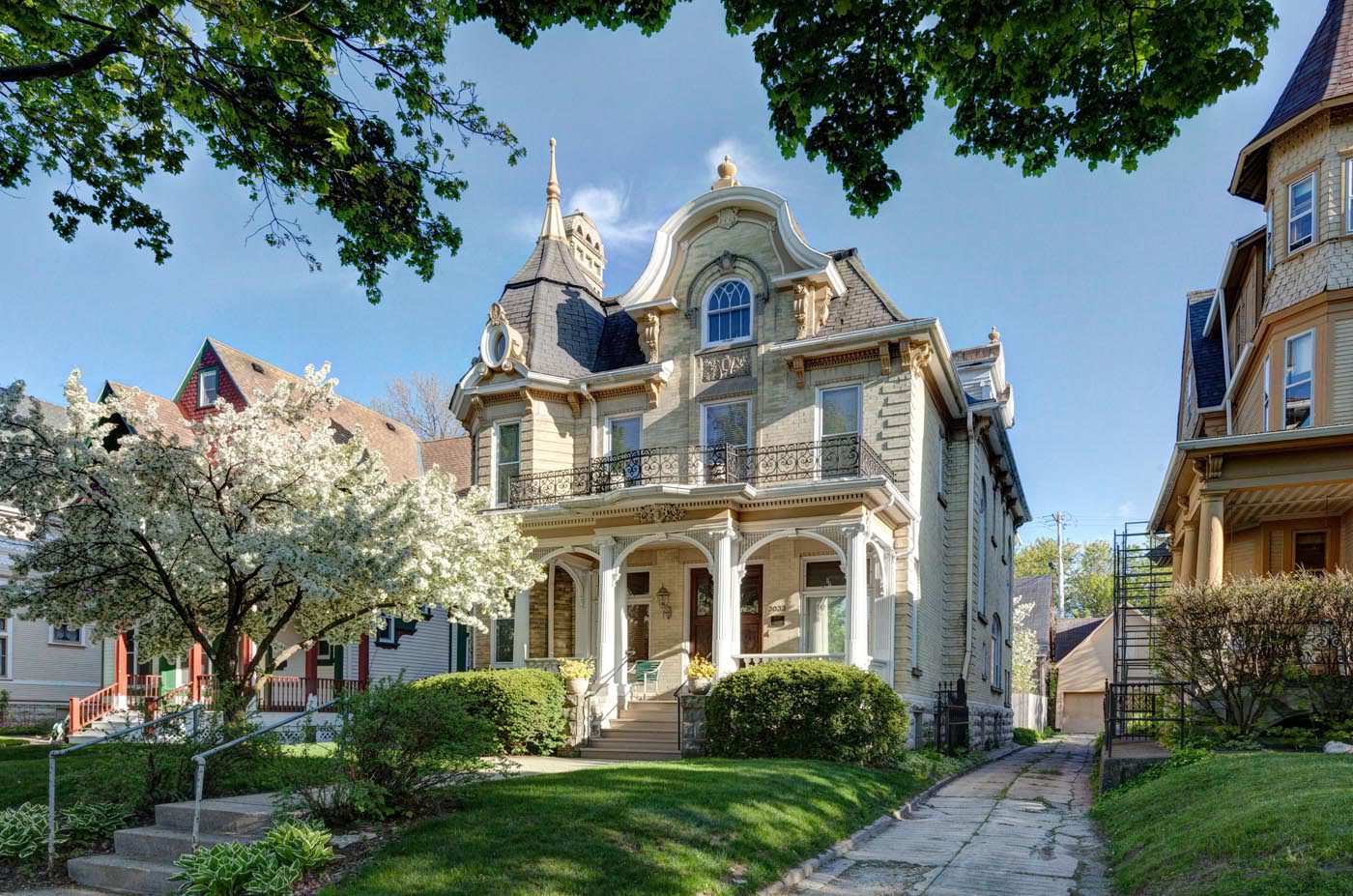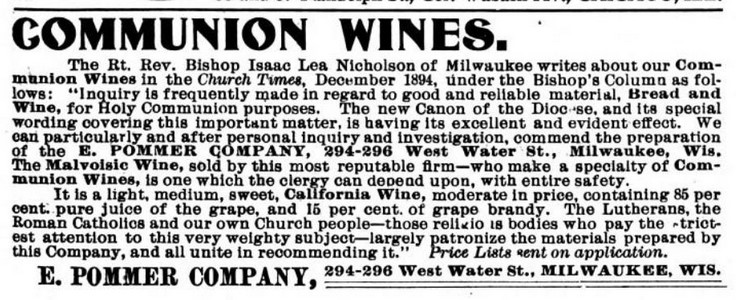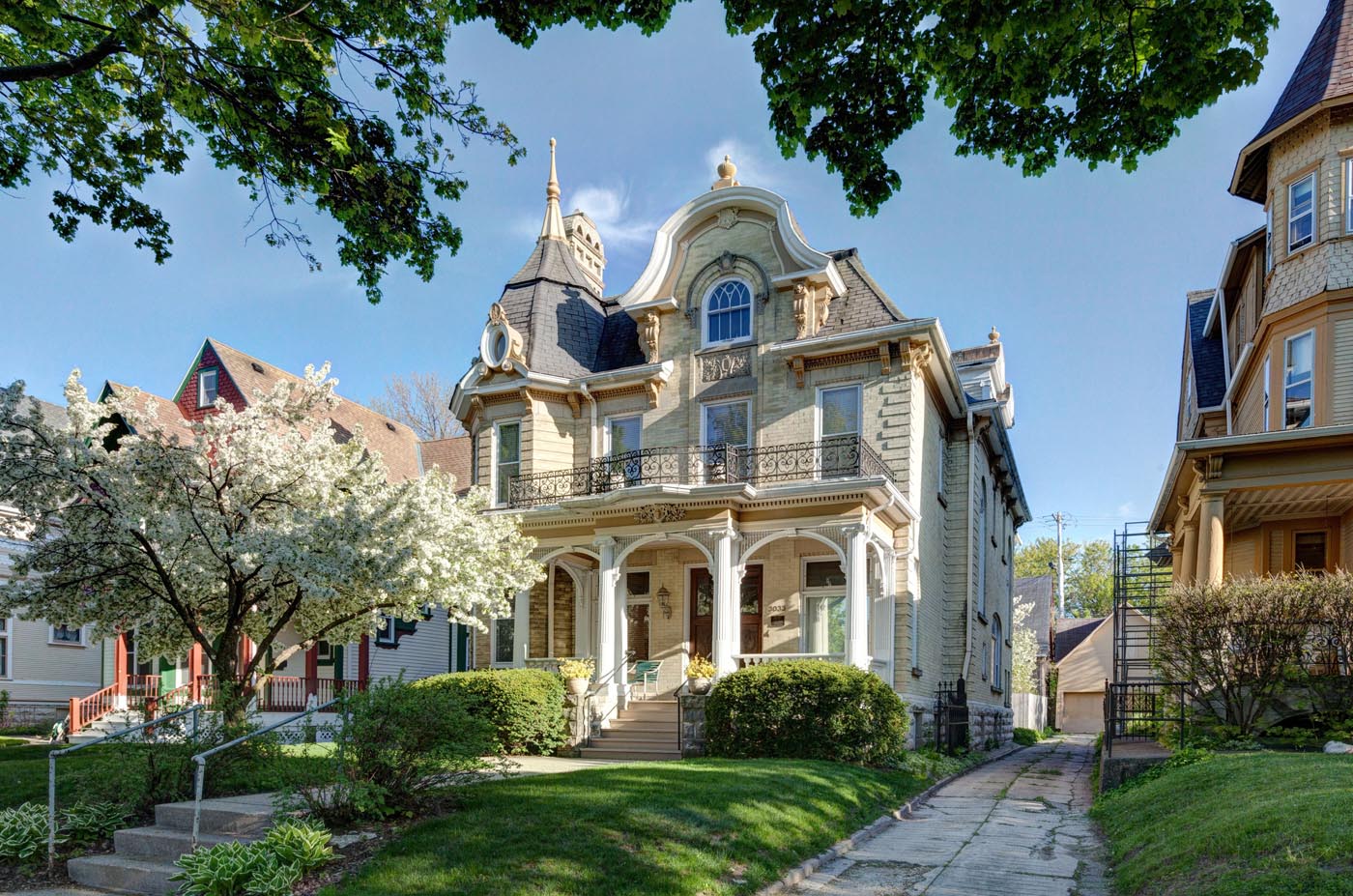The Ernst Pommer House, built in 1895, is located in a neighborhood that, at one time, was home to many prosperous German-Americans. The architects, Herman P. Schnetzky and Eugene Leibert, were both born in Germany. They emigrated to this country in their early adulthood. During their five-year partnership, from 1891 to 1896, they produced many notable commercial and residential buildings. The Germania Building, 135 W. Wells Street, is their best known building.
Although many homes in the west side area were designed in the German Renaissance style of the 15 and 16th centuries, Schnetzky and Liebert incorporated the light, curving lines of the 18th century German mansions and castles into their designs. This style is usually referred to as Baroque Revival. The exterior features of note in this particular cream brick building include
• A helmet shaped, third floor tower with oval windows.
• An unusual sunbonnet shaped front gable.
• A second floor balustrade of delicate ironwork.
• Finely proportioned and detailed classical columns.
• An ornamental chimney with an iron medallion.
Ernst Pommer was a prosperous German-American who ran a wholesale wine business from a shop on what is now Plankinton Avenue. Although prohibition brought an end to his business, he and his family lived in the home until 1922 when they moved to a smaller residence on Washington Boulevard. Pommer died in 1928, and his wife Marie in 1935.
Since1922, the structure, originally designed as a single-family home, has served many different purposes. In addition to being a rooming house, it also was used as a social service agency, and then a convent More recently, the house was divided into eleven small apartments and single room dwellings.
During the mid-eighties, Concordia College purchased many properties on the near west side area with the plan to expand the campus. Instead, the college vacated the area, moving to existing structures in the Mequon area. The Pommer House was left vacant and eventually sold to the West Side Neighborhood Conservation Group.
West Side was able to secure federal funding to restore homes in the neighborhood with the goal of reestablishing owner occupied residences in the area. This effort was very successful and the “Old Concordia Neighborhood” now has both local and national historic designations.
When Concordia College vacated the area, some of the architectural features of the homes which had been purchased for the expansion of the college were removed and sold. Although the original stained glass windows on the stairwell and throughout the first floor of the Pommer house were removed, many of the home’s original features remain. Worth noting are
• The graceful and beautifully proportioned front entry and staircase.
• The original fireplace mantel and mirror in the front parlor.
• The first floor woodwork and pocket doors.
• The built in dining room buffet.
• The marble sink in the kitchen.
• The claw foot bathtub in the second floor bathroom.
(Historical information about the Pommer House is from Milwaukee: Ethnic Houses Tour, published by the City of Milwaukee Department of City Development.)



